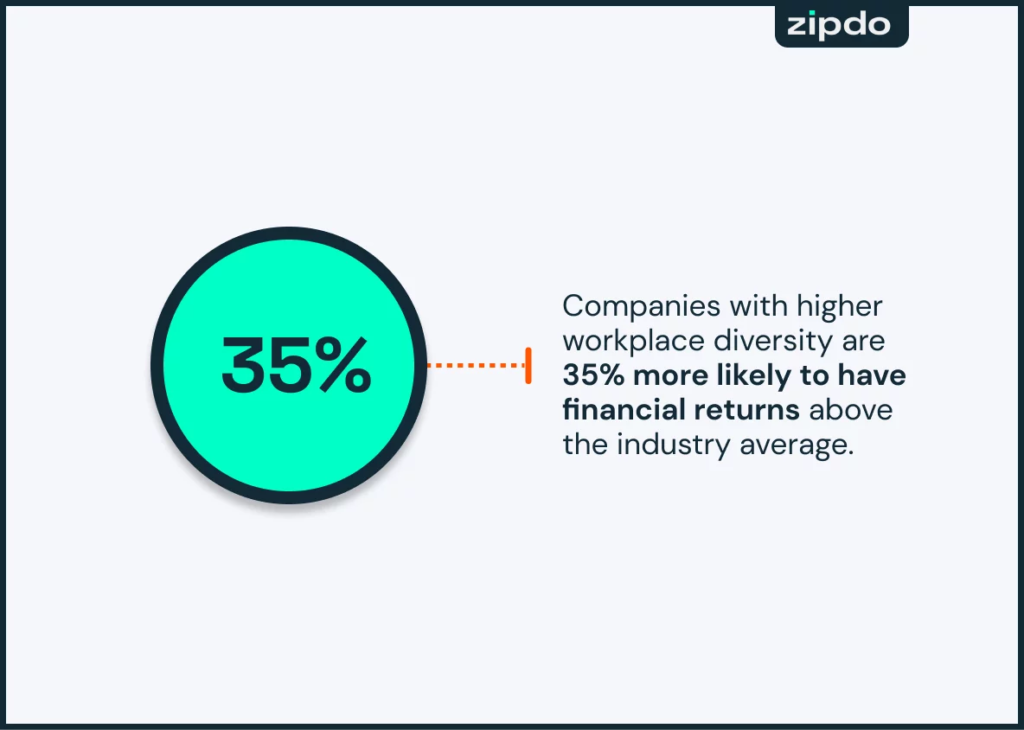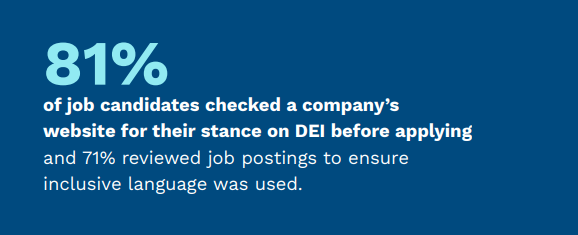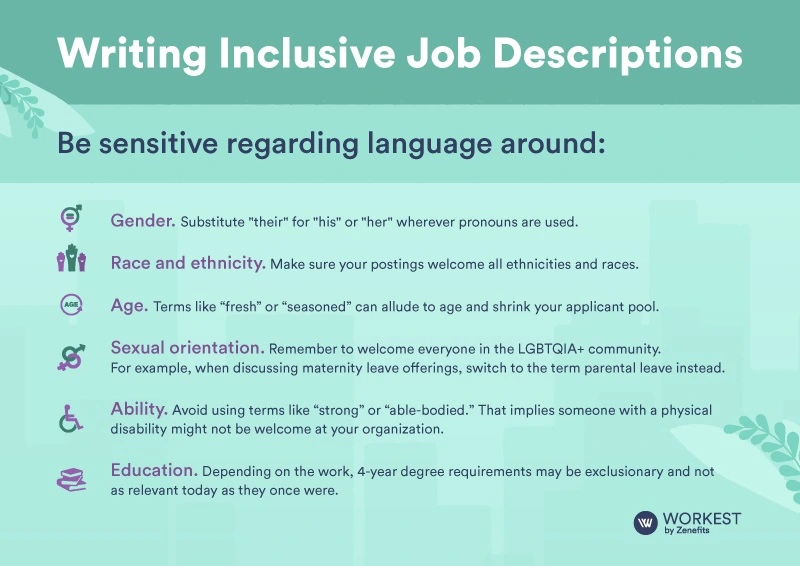Pipeline Development: Revolutionizing Recruitment through Diversity
In today’s dynamic business environment, diversity recruitment isn’t just a trend—it’s a crucial strategy for success. Embracing diversity in your hiring process is a powerful tool to enrich your workforce with a range of perspectives, experiences, and skills while driving greater business success long-term.
This guide will explore why diversity recruitment should be a core strategic priority for every business, plus actionable diversity hiring practices to put in place now so that you can build a diverse, inclusive, and resilient business for the future.
Quick Takeaways:
- Companies with diverse teams earn higher financial returns than homogenous counterparts.
- Diverse teams make companies more innovative, agile, and equipped to solve complex problems.
- More than 80% of job seekers check a company’s DE&I position before applying to a job there.
- Successful diversity hiring requires proactive strategies such as broadening recruitment channels and using more inclusive language in job postings.
- Diversity recruitment strategies can’t be stagnant. Frequent, data-driven performance evaluation and continuous improvement are essential.
Why Diversity Recruitment Matters
In our modern business landscape, the importance of diversity recruitment is two-sided: From an ethical perspective, inclusion is a fundamental sign of a socially responsible and morally sound organization. At the same time, diversity hiring practices have objectively been shown to drive business success through wider perspectives that drive innovation, creativity, and growth.
Today, companies with higher workplace diversity are 35% more likely to have financial returns above the industry average.

Companies that prioritize diversity are better equipped to navigate fast-changing environments, solve complex problems, and provide a high-quality customer and employee experience.
Moreover, organizations that champion diversity are seen as more attractive employers, drawing talent that enhances their brand reputation and success. A recent survey found that 81% of job candidates now check a company’s website for their stance on DE&I before applying for an open position there.

This strongly indicates that organizations that excel at diversity hiring and recruitment are positioned to win the best candidates on the job market.
Finally, diversity in the workplace leads to higher employee satisfaction and retention. When employees see their identities and backgrounds reflected in their colleagues and company leaders, it fosters a sense of belonging and inclusion. This inclusive culture creates a more positive workplace environment and a sense of individual value to the organization.
But implementing a diversity recruitment strategy is no perfunctory endeavor. Diversity hiring has long been rooted in the need to meet compliance requirements and statistical diversity standards. But today, companies are expected to make a more genuine commitment.
Diversity hiring is no longer about checking boxes or meeting quotas—it requires infusing DE&I values into the DNA of a company, including its hiring practices and decision-making processes. In the next section, we’ll walk through actionable diversity hiring practices you can implement at your organization to build an organically inclusive culture and diverse workforce.
5 Diversity Hiring Practices You Can Implement Now
- Broaden Recruitment Channels
Diversify your talent pool by exploring recruitment channels beyond the usual platforms. This includes advertising job openings on diversity-focused job boards, participating in career fairs at diverse colleges and universities, and working with community organizations that work with underrepresented groups.
By casting a wider net, you increase your chances of attracting a diverse range of candidates.
Standardize Interviews and Evaluation Measures
Implement structured interviews with a consistent set of questions for all candidates, and data-driven candidate evaluation measures. This helps to reduce unconscious bias, ensure fairness to all candidates, and enable hiring teams to assess candidates objectively based on skills and performance potential.
- Use Inclusive Language in Job Postings
Use Inclusive Language in Job Postings
Ensure that the language you use in job descriptions and postings is inclusive and free from biases. This includes avoiding jargon or terms that unconsciously favor a particular gender or cultural background. Inclusive language helps attract a broader spectrum of candidates and demonstrates your commitment to diversity. Below are some helpful guidelines you can use as a resource:

- Establish Mentorship Programs for Underrepresented Groups
Establish Mentorship Programs for Underrepresented Groups
Develop mentorship and internship programs specifically tailored for underrepresented groups. These programs can offer valuable work experience and professional development opportunities, creating a pipeline for future full-time positions within your organization. They are also effective in demonstrating your commitment to supporting and nurturing diverse talent.
Provide Diversity Training to Your Hiring Teams
Equip your internal recruitment and hiring teams with the necessary training to understand and mitigate unconscious bias. Diversity training should cover the importance of an inclusive workplace, strategies for fair hiring practices, and the skills needed to conduct inclusive interviews. Educating your own team is a crucial step in ensuring your recruitment process supports and enhances your diversity goals.
Common Diversity Recruitment Challenges
Diversity recruitment is a transformative step towards a more inclusive workplace, yet it presents unique challenges that companies must navigate. One of the most pervasive obstacles is unconscious bias. Even with the best intentions, recruiters and hiring managers unknowingly allow their personal experiences, stereotypes, and cultural background to influence their hiring decisions. These biases can lead to a workforce that lacks diversity, despite efforts to recruit from a broad range of candidates.
Another significant challenge is the limitation of talent pools. Often, companies rely on traditional recruitment channels, which may not reach a diverse audience. This limited approach can inadvertently exclude qualified candidates from underrepresented groups.
Additionally, some industries face systemic issues where certain demographics are underrepresented in the talent pipeline due to historical, educational, or socioeconomic factors.
Outdated recruitment practices can further compound these issues. Relying on conventional hiring strategies without integrating diversity-focused approaches can hinder a company’s ability to attract and retain a diverse workforce.
It’s essential for organizations to recognize these challenges and take active steps to overcome them. By implementing the strategies we covered in the last section and coupling it with frequent and data-driven DE&I performance evaluation, you can raise your self-awareness when it comes to your diversity hiring success and create a culture of continuous improvement around it.
Most importantly, this will show to employees, candidates, partners, customers, and the world at large that your company is committed to diversity as a core value and prioritizes it through real action.
For a deeper dive on the current DE&I landscape and how to navigate it, download our recent report: CMOs & Chief DE&I Officers: Joined at the Hip for a DE&I Revolution.



